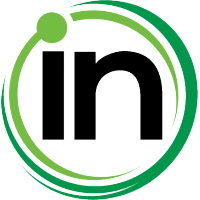

Easier access to features and functionality will result in a stronger, more efficient user experience with fewer clicks. The clean and simple interface will be accessible on all mobile, tablet, laptop and desktop devices. The application will be enhanced with a modern look and better usability. Roland revealed that InSync’s latest release will include new technology and a new theme. Through constant monitoring of how patients measure up to certain parameters and standards, InSync’s products will proactively identify patients who are due for preventive visits and screenings. InSync strives to make a long-established industry better by creating patient-centric solutions focused on value-based care. We want to help the industry become nimbler and improve the reaction to any changes the marketplace may present - whether regulatory, payer induced or growth strategies of the practice, ” asserts Roland. “ We aren ’ t trying to reinvent the wheel, but rather improve upon the foundation that ’ s already been laid throughout healthcare IT. Everyone at InSync has been able to combine an incredible amount of experience in healthcare and an extensive history in healthcare technology to create patient-centric solutions focused on value-based care. The company has a team of stakeholder representatives, from the owner, to the implementation and support teams, to outside industry experts. This is the opposite of what some company’s do, which is, they think up ideas, build a product, and then see if customers like it,” says Roland. When you work backward, you start with the client and their needs and problems. “We’re not competitor obsessed, but we’re customer obsessed. InSync caters to services and develops products in such a way that their interests are aligned with the clients, which in the long-term, works out well for both InSync and their customers. Placing the majority of the focus on clients ultimately makes a company more resilient. InSync is a firm believer that what is best for the client ultimately turns out to be best for the business. To further our commitment and leadership in healthcare IT, we ’ re focusing on automation tools and setup capabilities that will allow for greater tailoring of the patient experience per provider.”After all, the future belongs to those vendors who can most automate encounters, allowing providers more time with patients in the limited amount of exposure they have.ĭistinctive Strategies Making Clients Successful “ The interesting part is, however, it still has room for growth, in our opinion. Before joining InSync, Roland served as Vice President of Sales for MD On-Line, a provider of acute and ambulatory clinical and practice management solutions.Īccording to Roland, the healthcare technology industry is growing exponentially, with a value approaching $30 billion worldwide. His experience in healthcare and technology includes more than 20 years of direct and channel sales, strategic planning and business development. Roland Therriault, President & Executive Vice President of Sales, manages all operations of the company, driving its go-to-market strategy and overseeing all sales activities. By leveraging advanced technology, best-in-class partnerships, and proven business processes, InSync provides services and solutions that translate into better efficiency for healthcare organizations. InSync Healthcare Solutions is a leading provider of MU-2 certified integrated EMR and Practice Management Software, as well as Revenue Cycle Management and Medical Transcription services to thousands of healthcare professionals throughout the United States.
#Insync healthcare solutions software
Through its suite of electronic medical record (EMR), practice management (PM) software and healthcare IT services, InSync Healthcare Solutions seeks to alleviate the stress placed on medical practices because of the rapidly changing industry. These innovations also pose challenges to both patients and providers. As the scope and cost of healthcare services in the United States have grown, so have the complexities of the supporting reimbursement systems, giving rise to entirely new industries in healthcare information technology (HIT) and revenue cycle management (RCM). The ever-changing relationships between healthcare providers, patients, and third-party payers create opportunities and challenges for practices. Maintaining financial stability allows institutions to operate efficiently and use the capital to enhance the health of a community. When hospitals and healthcare organizations save lives, and treat patients, they also strive to develop favorable processes and strategies for staying financially stable.

Healthcare institutions continually strive to deliver high-quality patient care and increase profit boundaries while adhering to a burgeoning array of regulatory specifications.


 0 kommentar(er)
0 kommentar(er)
